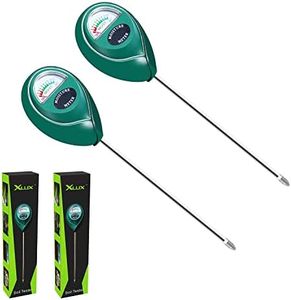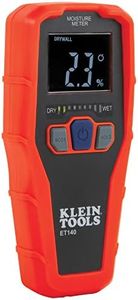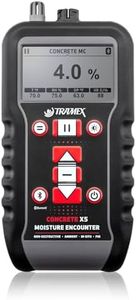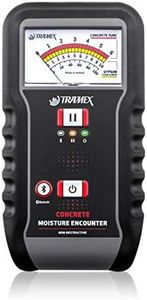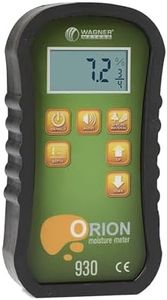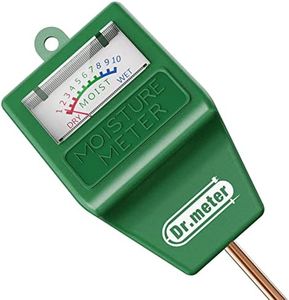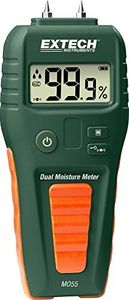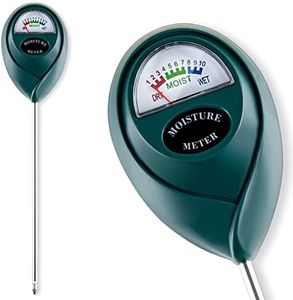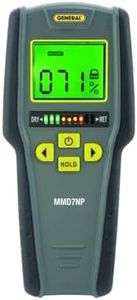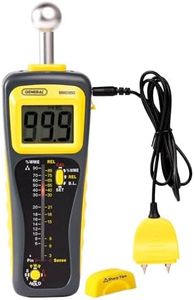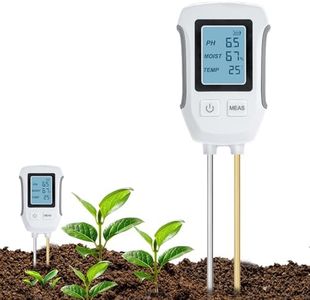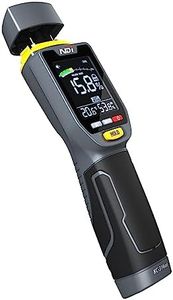We Use CookiesWe use cookies to enhance the security, performance,
functionality and for analytical and promotional activities. By continuing to browse this site you
are agreeing to our privacy policy
10 Best Moisture Meters
From leading brands and best sellers available on the web.Buying Guide for the Best Moisture Meters
Choosing the right moisture meter can make a big difference whether you're measuring the moisture in wood, drywall, soil, or other materials. The right tool will not only give you accurate information but also help you avoid potential damage like mold, decay, or improper curing. To make the best choice, think about what material you’ll be testing most often and how you'll be using the device—whether it's for occasional home checks or more frequent professional work. Understanding the key features of moisture meters will help you pick the best option for your needs.Type (Pin vs. Pinless)Moisture meters come mainly in two types: pin and pinless. Pin meters use metal probes inserted into the material to measure moisture between the pins, making small holes. Pinless meters use a sensor that scans the surface without damaging it. If you need precise, deeper readings and don’t mind small holes, go for a pin meter; if you want a quick, non-destructive check (especially important for finished surfaces), pick a pinless model. Your main use—like woodworking or inspecting home walls—will guide you here.
Moisture Measurement RangeThis refers to the lowest and highest percentage of moisture the meter can detect. For wood, a typical range is 5–40%; for other materials, it can be broader. If you mainly work with wood or building materials, ensure the range matches what you test most often. Low ranges are best for dry environments or lumber, while wider ranges suit gardening, concrete, or varied building materials.
AccuracyAccuracy tells you how close the meter’s reading is to the real moisture content. Higher accuracy helps you make better decisions, especially in professional or safety-critical tasks. For everyday home use, standard accuracy is often enough, but for precision (like woodworking or restoration), look for a model with known higher accuracy ratings—often specified by the manufacturer.
Material Selection/SettingsSome meters let you choose the type of material you’re testing, like wood, drywall, or concrete. This setting adjusts the readings for more accuracy across different surfaces. If you work with more than one material, a meter with multiple material settings is useful. If only one material, a simple single-setting device will do.
Display Type and ReadabilityThe display shows you the moisture levels—some are digital with clear screens, while others may have analog dials. A backlit display or large numbers help if you work in dim areas or want to quickly check results. For regular, precise use, choose a meter with a bright, easy-to-read display.
Depth of MeasurementThis means how deeply the meter can sense moisture. Pin meters measure between the pins, often a shallow depth, while pinless meters can scan to a fixed depth below the surface (often noted in product details). For deep-set moisture in thick materials, a tool with greater depth is best; for surface checks, shallow readings suffice.
Additional FeaturesSome meters come with added features like hold functions, auto power-off, audible alerts, or even Bluetooth connections for data logging. Think about what’s most convenient—if you move between locations or want to keep records, extra features can make the job easier, but if you need quick checks, keep it simple.
